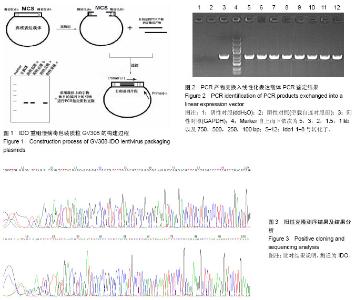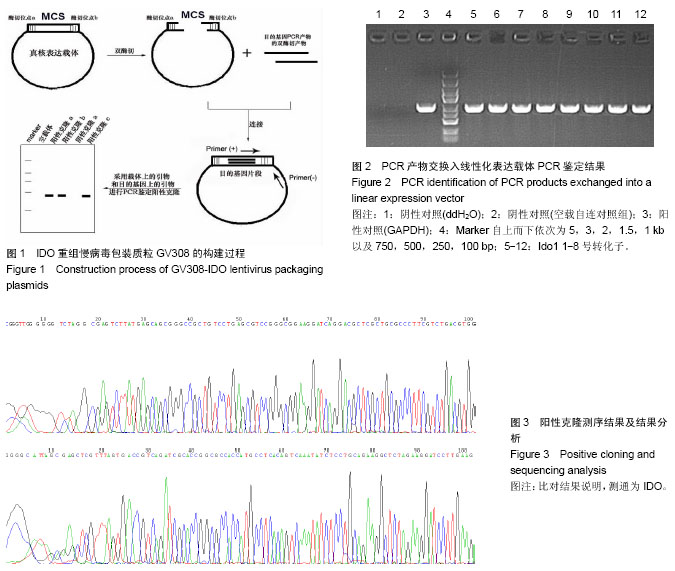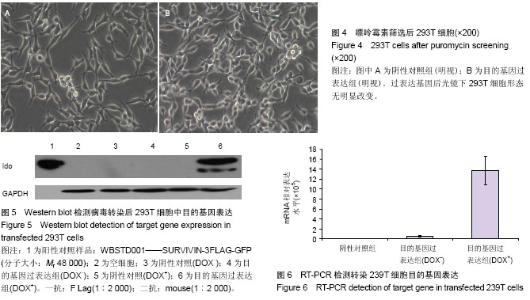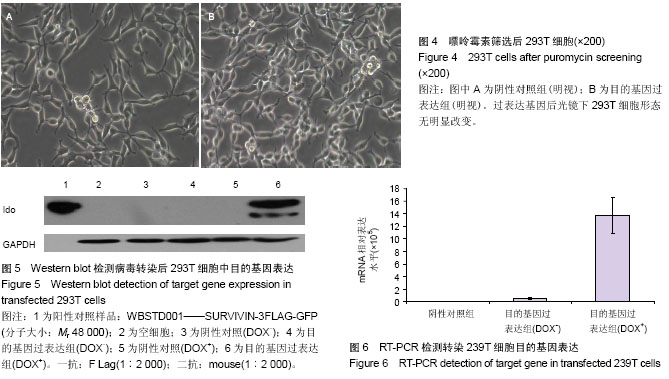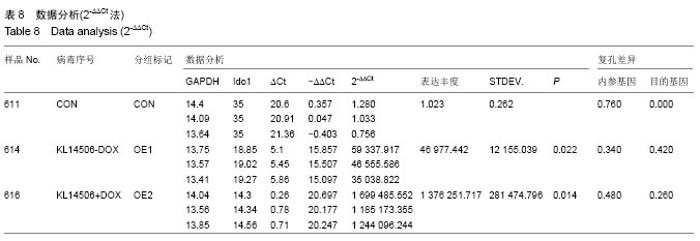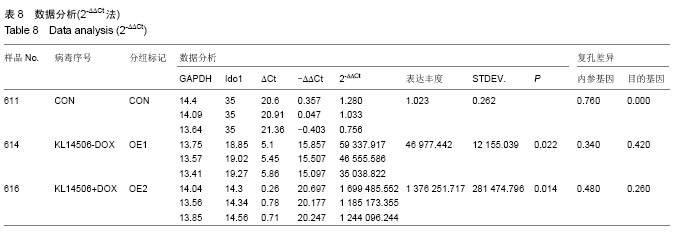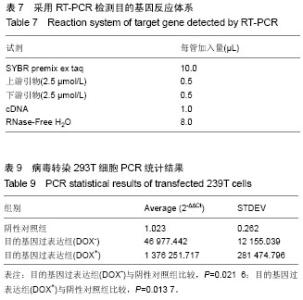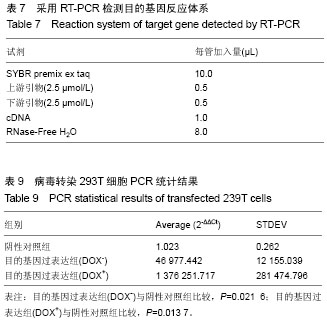| [1] Bukrinsky MI, Haggerty S, Dempsey MP, et al. A nuclear localization signal within HIV-1 matrix protein that governs infection of non-dividing cells. Nature. 1993;365(6447): 666-669.
[2] Gaspar HB, Cooray S, Gilmour KC, et al. Hematopoietic stem cell gene therapy for adenosine deaminase-deficient severe combined immunodeficiency leads to long-term immunological recovery and metabolic correction. Sci Transl Med. 2011;3(97):97-80.
[3] Gaspar HB, Cooray S, Gilmour KC, et al. Long-term persistence of a polyclonal T cell repertoire after gene therapy for X-linked severe combined immunodeficiency. Sci Transl Med. 2011;3(97):97.
[4] Lamb LS Jr, Bowersock J, Dasgupta A, et al. Engineered drug resistant γδ T cells kill glioblastoma cell lines during a chemotherapy challenge: a strategy for combining chemo- and immunotherapy. PLoS One. 2013;8(1):e51805.
[5] Chen F, Cai B, Gao Y, et al. Suicide gene-mediated ablation of tumor-initiating mouse pluripotent stem cells. Biomaterials. 2013b;34(6):1701-1711.
[6] Finkelshtein D, Werman A, Novick D, et al. LDL receptor and its family members serve as the cellular receptors for vesicular stomatitis virus.Proc Natl Acad Sci U S A. 2013; 110(18):7306-7311.
[7] Burns JC, Friedmann T, Driever W, et al. Vesicular stomatitis virus G glycoprotein pseudotyped retroviral vectors: concentration to very high titer and efficient gene transfer into mammalian and nonmammalian cells. Proc Natl Acad Sci U S A. 1993;90(17):8033-8037.
[8] Li Y, Drone C, Sat E, et al. Mutational analysis of the vesicular stomatitis virus glycoprotein G for membrane fusion domains. J Virol. 1993;67(7):4070-4077.
[9] Strappe PM, Hampton DW, Cachon-Gonzalez B, et al. Delivery of a lentiviral vector in a Pluronic F127 gel to cells of the central nervous system. Eur J Pharm Biopharm. 2005; 61(3):126-133.
[10] Waehler R, Russell SJ, Curiel DT. Engineering targeted viral vectors for gene therapy. Nat Rev Genet. 2007;8(8):573-587.
[11] Guibinga GH, Hall FL, Gordon EM, et al. Ligand-modified vesicular stomatitis virus glycoprotein displays a temperature-sensitive intracellular trafficking and virus assembly phenotype. Mol Ther. 2004;9(1):76-84.
[12] Kameyama Y, Kawabe Y, Ito A, et al. Antibody-dependent gene transduction using gammaretroviral and lentiviral vectors pseudotyped with chimeric vesicular stomatitis virus glycoprotein. J Virol Methods. 2008;153(1):49-54.
[13] Padmashali RM, Andreadis ST. Engineering fibrinogen-binding VSV-G envelope for spatially- and cell-controlled lentivirus delivery through fibrin hydrogels. Biomaterials. 2011;32(12):3330-3339.
[14] Dreja H, Piechaczyk M. The effects of N-terminal insertion into VSV-G of an scFv peptide. Virol J. 2006;3:69.
[15] Guinivan P, Ladda RL. Decrease in epidermal growth factor receptor levels and production of material enhancing epidermal growth factor binding accompany the temperature-dependent changes from normal to transformed phenotype. Proc Natl Acad Sci U S A. 1979;76(7):3377-3381.
[16] Yewale C, Baradia D, Vhora I, et al. Epidermal growth factor receptor targeting in cancer: a review of trends and strategies. Biomaterials. 2013;34(34):8690-8707.
[17] Udayachander M, Meenakshi A, Ansamma J, et al. Lymphoma-associated antigen (LAA): isolation, characterization and clinical evaluation. Br J Cancer. 1983; 48(5):717-725.
[18] Deutsch YE, Tadmor T, Podack ER, et al. CD30: an important new target in hematologic malignancies. Leuk Lymphoma. 2011;52(9):1641-1654.
[19] Matthey B, Borchmann P, Schnell R, et al. Metalloproteinase inhibition augments antitumor efficacy of the anti-CD30 immunotoxin Ki-3(scFv)-ETA' against human lymphomas in vivo. Int J Cancer. 2004;111(4):568-574.
[20] Braschoss S, Hirsch B, Dübel S, et al. New anti-CD30 human pancreatic ribonuclease-based immunotoxin reveals strong and specific cytotoxicity in vivo. Leuk Lymphoma. 2007;48(6): 1179-1186.
[21] Pardo A, Stöcker M, Kampmeier F, et al. In vivo imaging of immunotoxin treatment using Katushka-transfected A-431 cells in a murine xenograft tumour model. Cancer Immunol Immunother. 2012;61(10):1617-1626.
[22] Höfig I, Barth S, Salomon M, et al. Systematic improvement of lentivirus transduction protocols by antibody fragments fused to VSV-G as envelope glycoprotein.Biomaterials. 2014;35(13): 4204-4212.
[23] Kaikkonen MU, Lesch HP, Pikkarainen J, et al. (Strept)avidin-displaying lentiviruses as versatile tools for targeting and dual imaging of gene delivery.Gene Ther. 2009; 16(7):894-904.
[24] Maetzig T, Kuehle J, Schwarzer A, et al. All-in-One inducible lentiviral vector systems based on drug controlled FLP recombinase. Biomaterials. 2014;35(14):4345-4356. |
